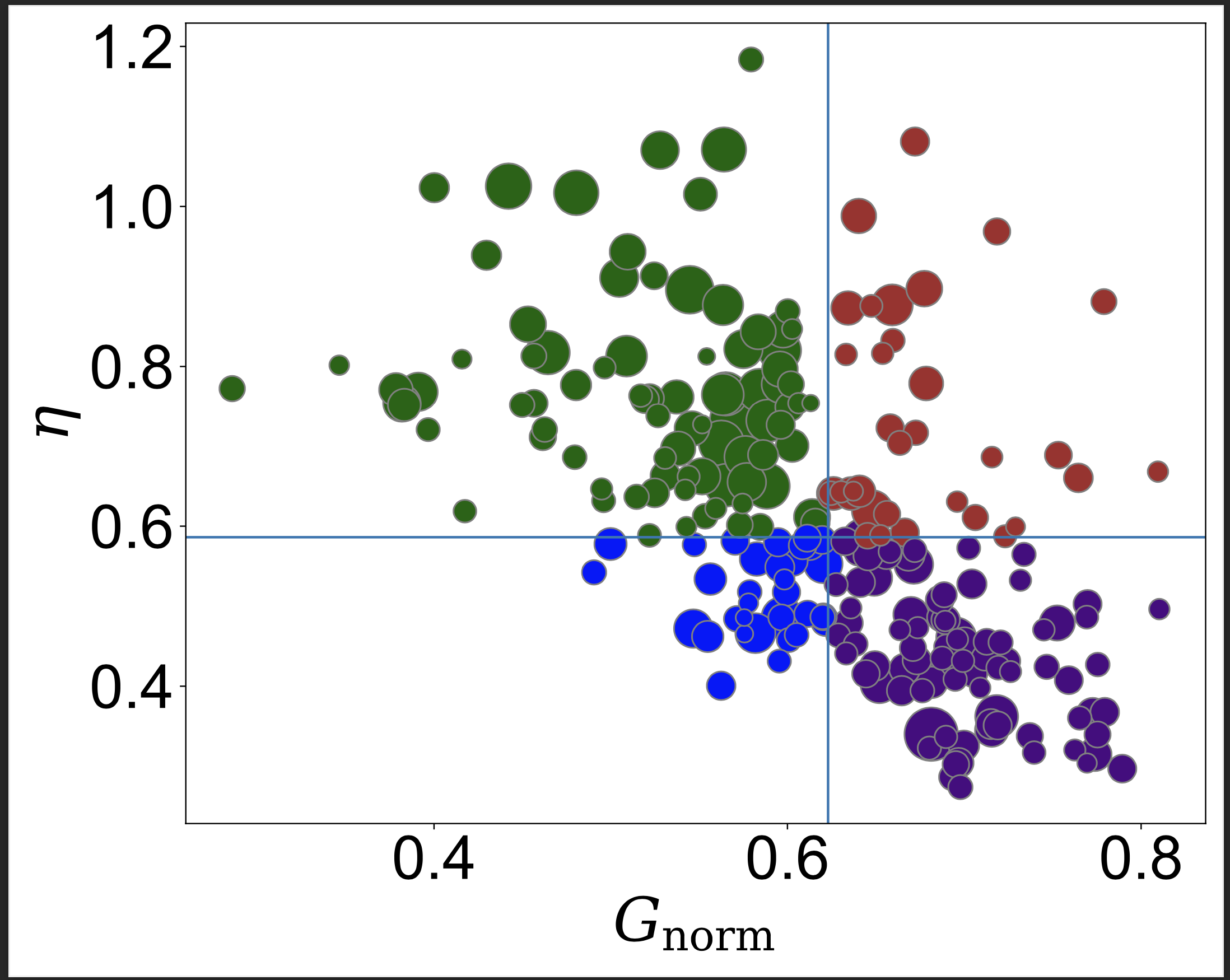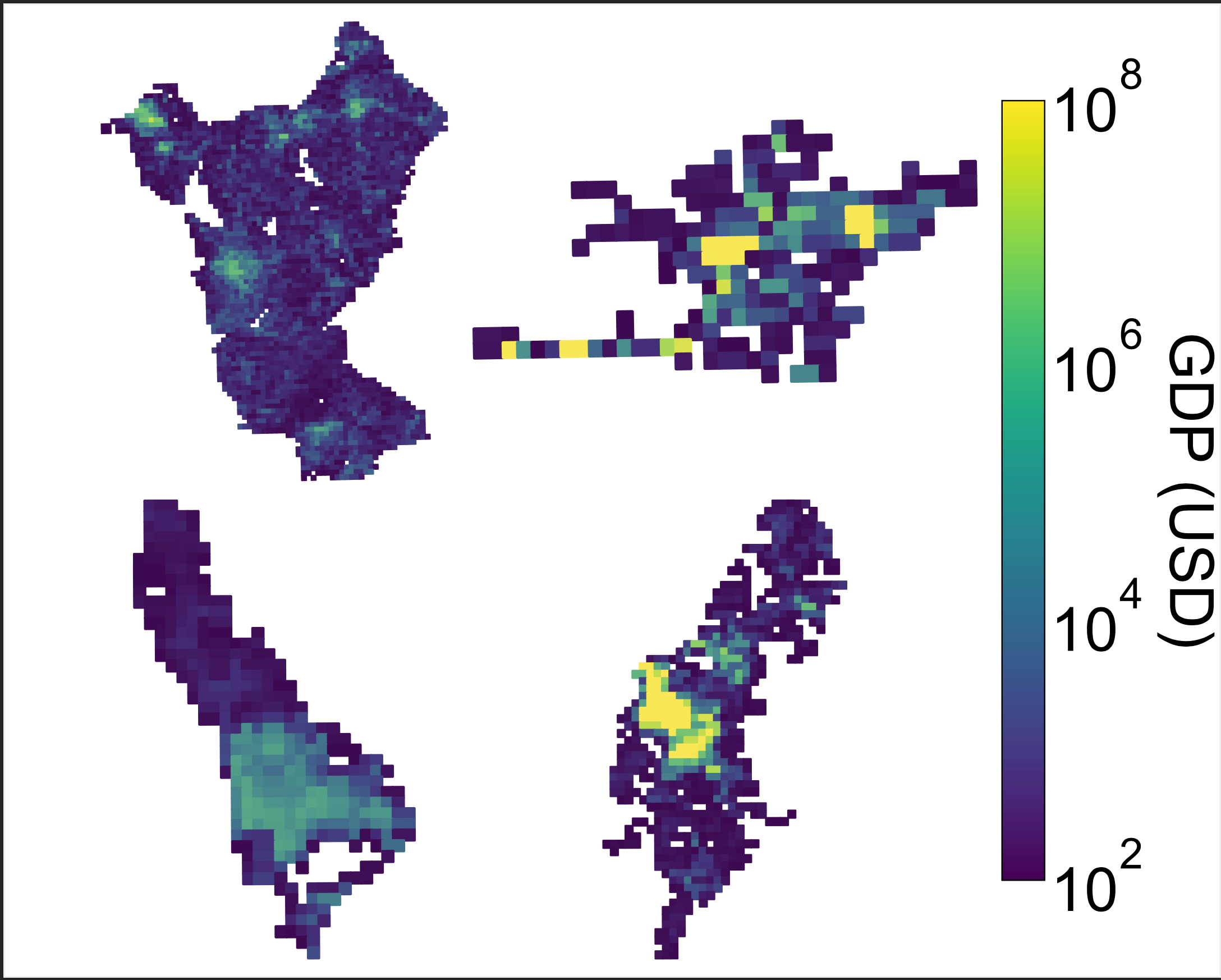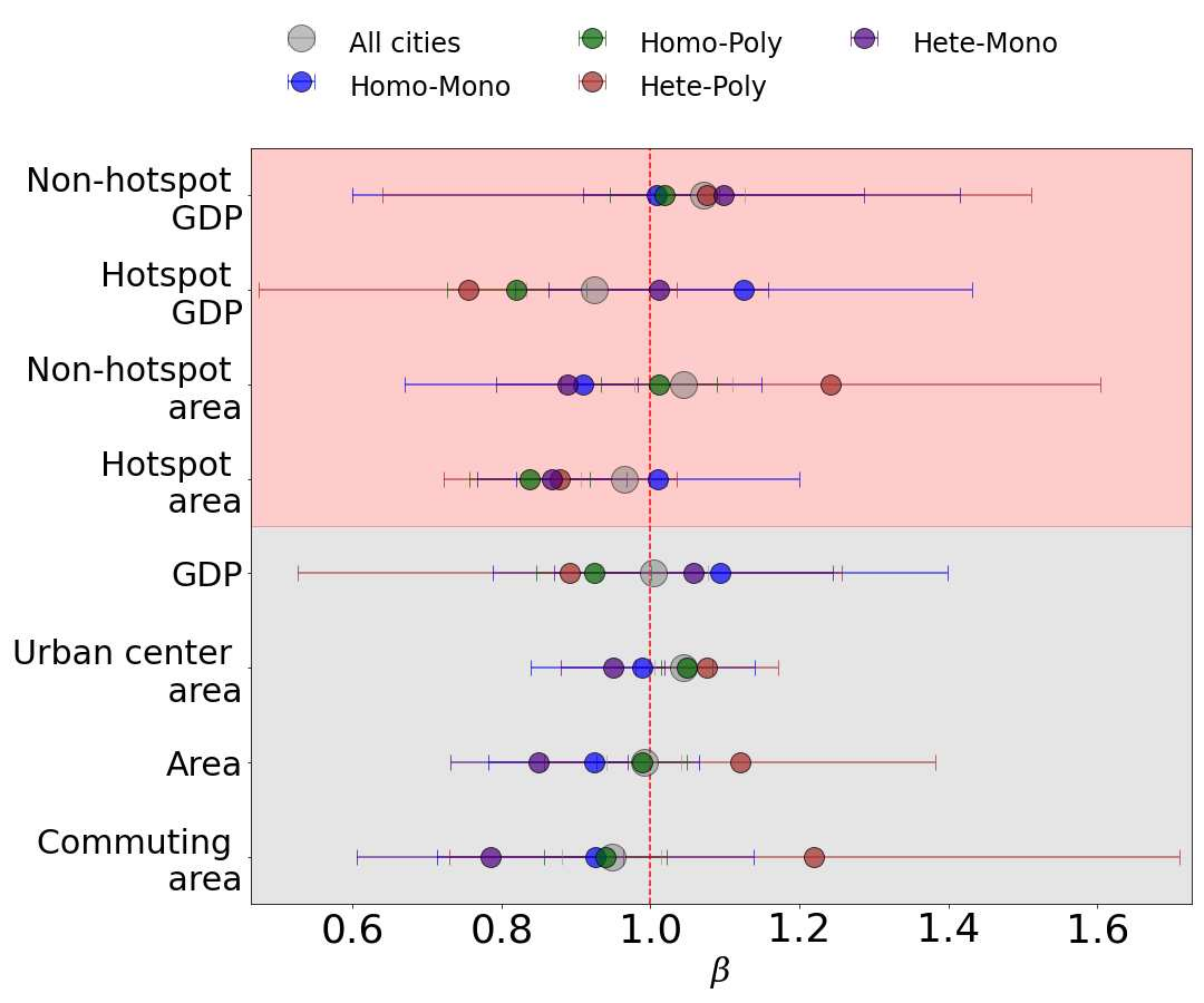Urban scaling in Indonesian cities
Urban scaling analysis has shown that various aggregated urban quantities obey power-law relationships with the population size. By classifying Indonesian cities based on the GDP microstructure in two dimensions (heterogeneity and spatial dispersion) and examining the scaling exponents of each class, we discover a non-trivial relation between scaling behavior and the GDP microstructure.


Left: Indonesian cities in the plane of Gini index and spatial dispersions. Right: 4 Classes of Indonesian cities based on the microstructure

Scaling exponents for each microstructure class
Under collaboration with Genta Kuno